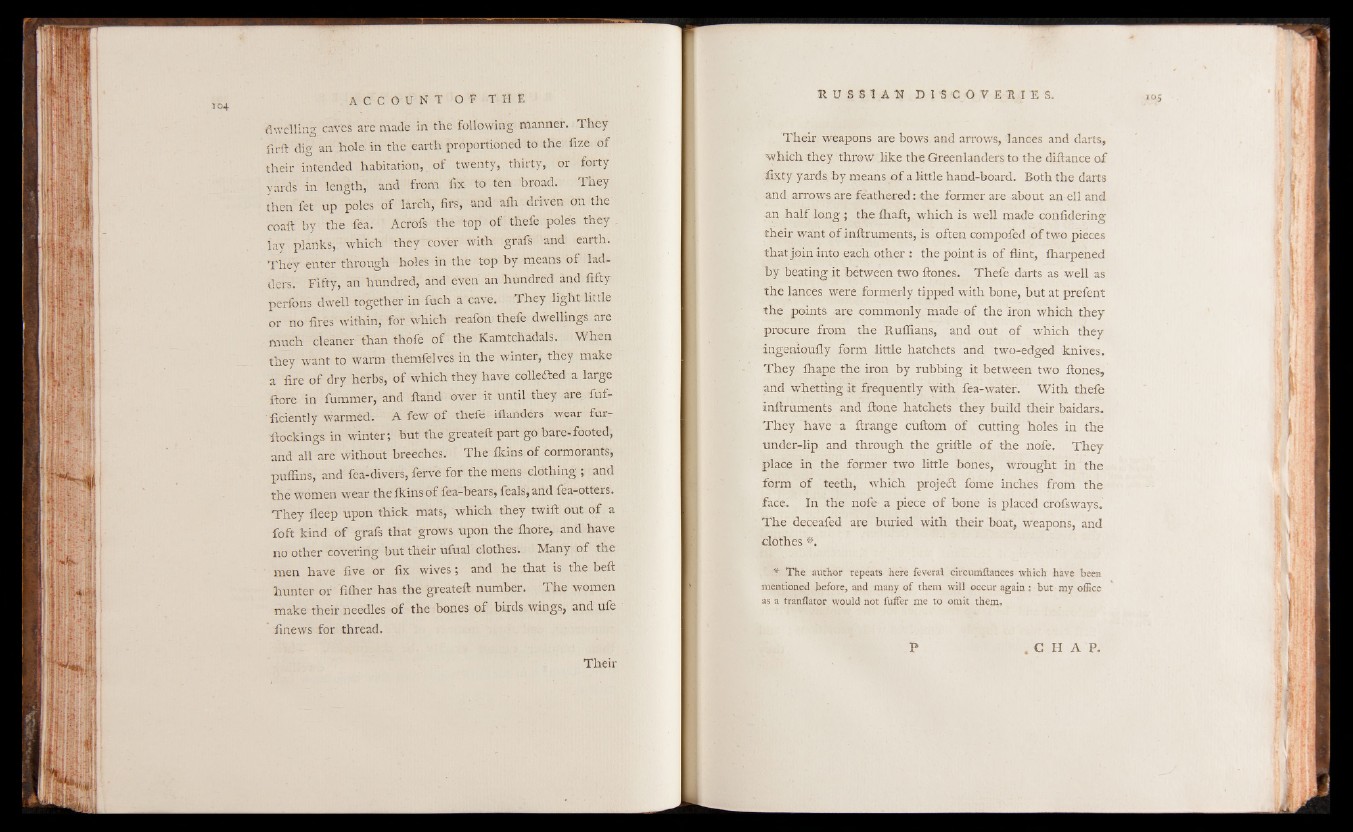
A C C O U N T O f THE
dwelling caves are made in the Following manner. They
firft dig an hole, in the earth proportioned to the fize of
their intended habitation,, of twenty, thirty, or forty
yards in length, and from fix to ten broad. They
then fet up poles of larch, firs, and afh driven on the
coaft by the fea. Acrofs the top of thefe poles they j
lay planks,: which they cover with grafs and earth.
They enter through holes in the top by means of lad.
ders. Fifty, an hundred, and even an hundred and fifty
perfons dwell together in fuch a cave. They light little
or no fires within, for which reafon thefe dwellings are
much cleaner than thofe of the Kamtchadals. When
they want to warm themfelves in the winter, they make
a fire of dry herbs, of which they have colletfted a large
ftore in fummer, and Hand over it until they are fuf-
ficiently warmed. A few of thefe iflanders wear fur-
ftockings in winter; but the greateft part go bare-footed,
and all are without breeches. The fkins of cormorants,
puffins, and fea-divers, ferve for the mens clothing ; and
the women wear the fkins of fea-bears, ieals, and fea-otters.
They fleep upon thick mats, which they twill: out of a
foft kind of graft that grows upon the fhore, and have
no other covering but their ufual clothes; Many of the
men have five or fix wives; and he that is the belt
hunter or filher has the greateft number. The women
make their needles of the bones of birds wings, and ufe
finews for thread.
Their
It OS S I A S D 1 S C O V E R I £ S. io
Their weapons are bows and arrows, lances and darts,
which they throw like the Greenlanders to the diftance of
fixty yards by means o f a little hand-board. Both the darts
and arrows are feathered: the former are about an ell and
an half long; the fhaft, which is well made conlidering
their want of inftraments, is often compofed o f two pieces
that join into each other; the point is of flint, fharpened
by beating it between two ftones. Thefe darts as well as
the lances were formerly tipped with bone, but at prefent
the points are commonly made of the iron which they
procure from the Ruffians, and out of which they
ingenioufly form little hatchets and two-edged knives.
They fhape the iron by rubbing it between two ftones,
and whetting it frequently with fea-water. With thefe
inftruments and ftone hatchets they build their baidars.
They have a ftrange cuftom of cutting holes in the
under-lip and through the griftle o f the nofe. They
place in the former two little bones, wrought in the
form of teeth, which project fome inches from the
face. In the nofe a piece of bone is placed crofsways.
The deceafed are buried with their boat, weapons, and
clothes *.
* The author repeats here feveral circumftances which have been
mentioned before, and many o f them will occur again: but my office
as a tranflator would not fuffer me to omit them.
P . C H A P .